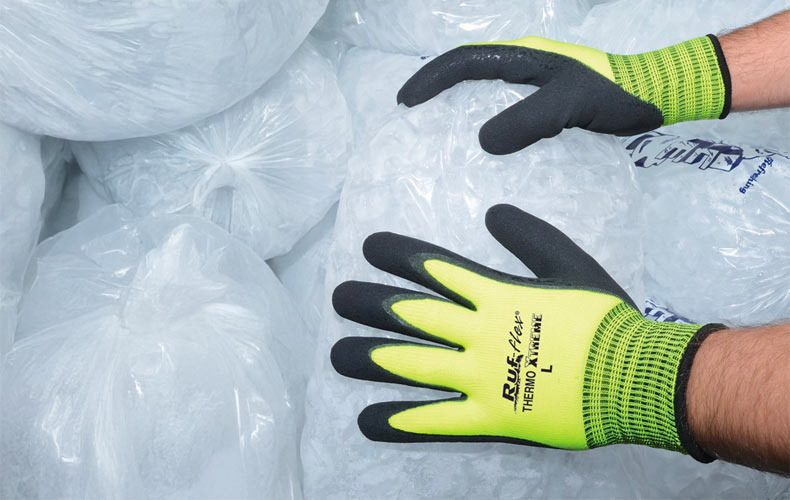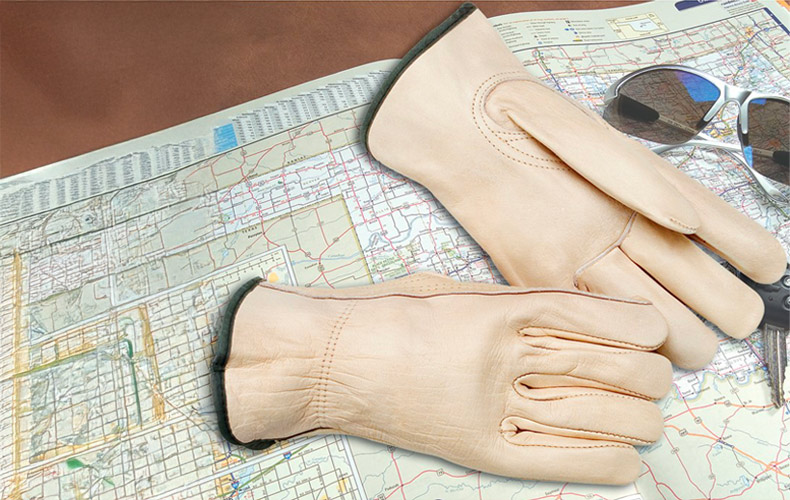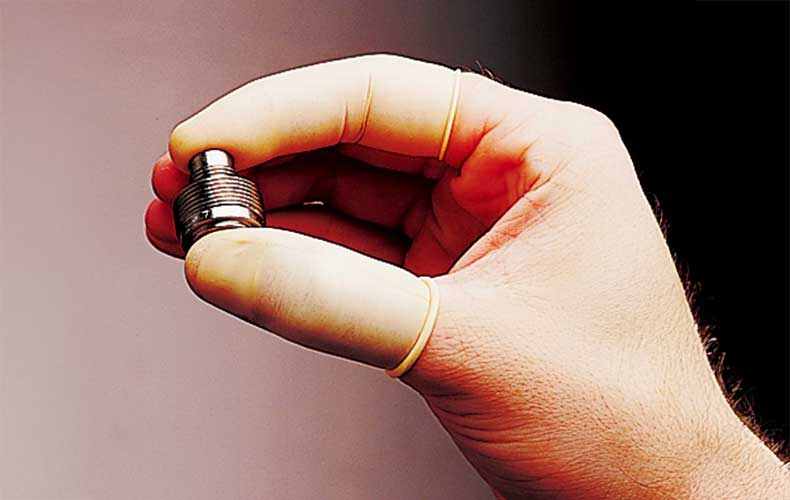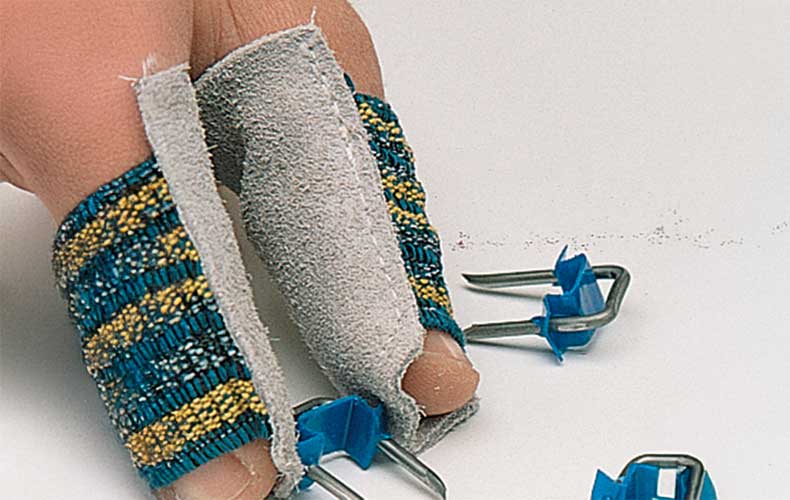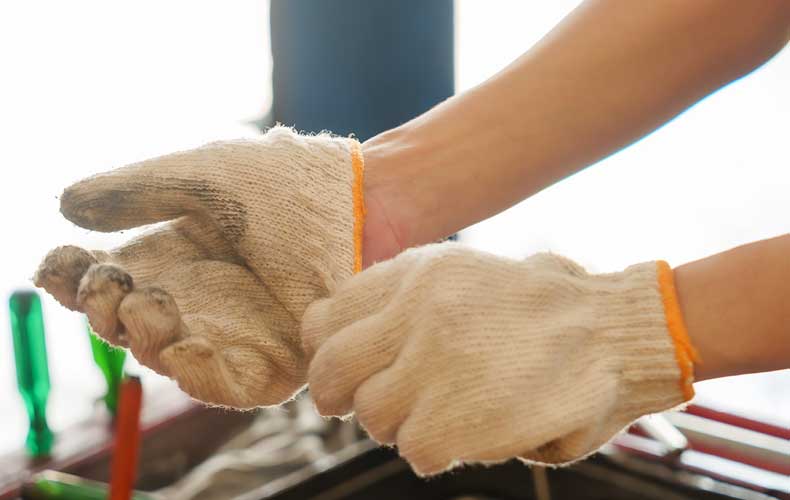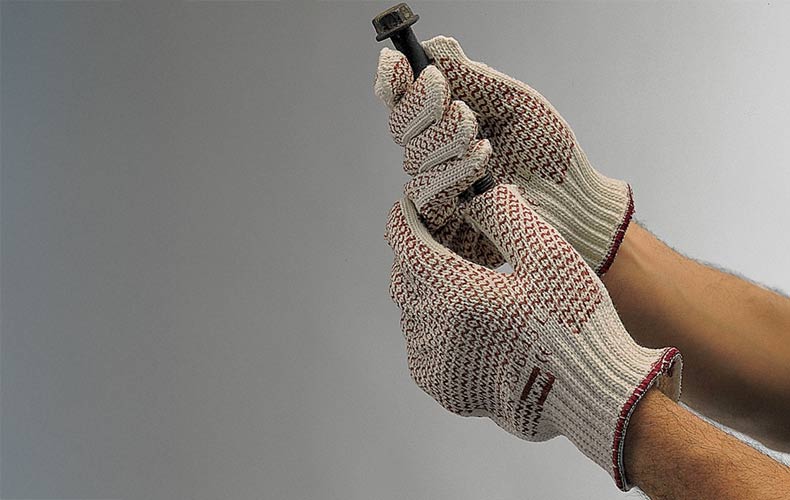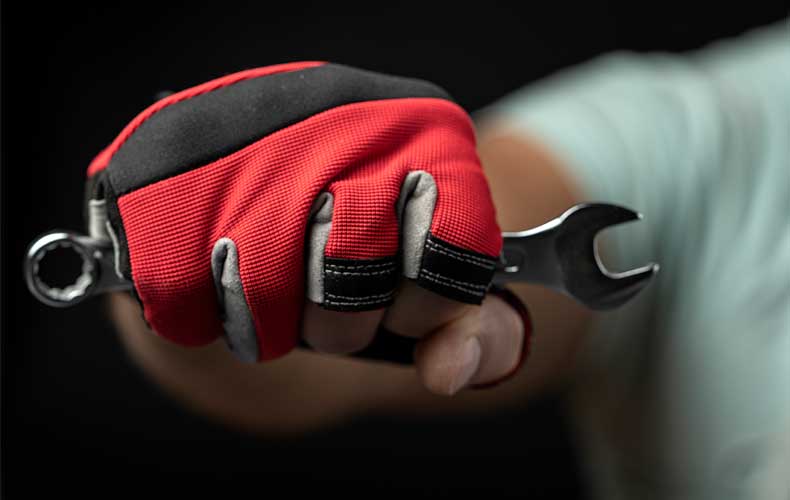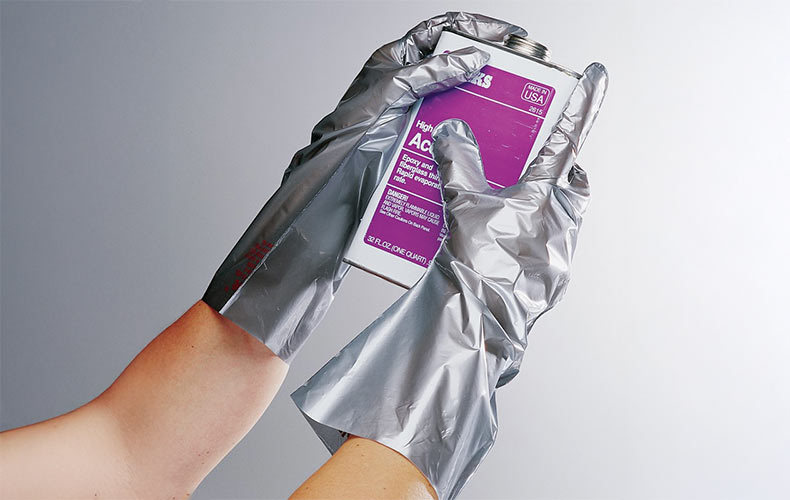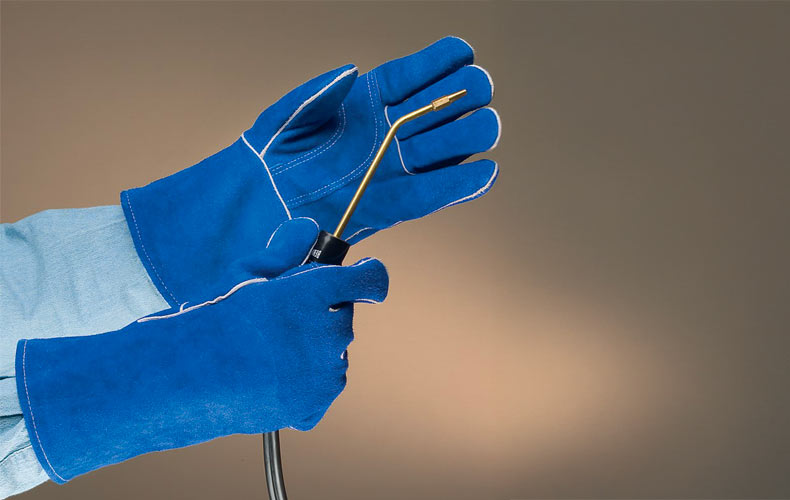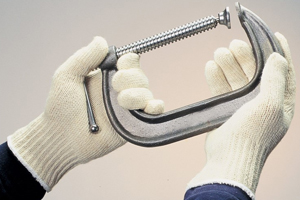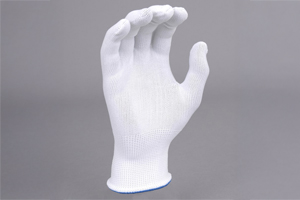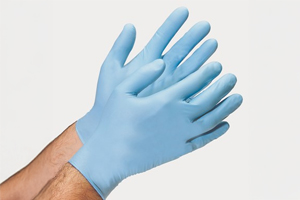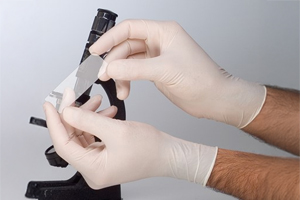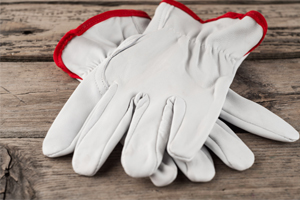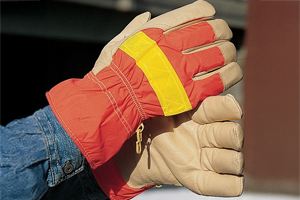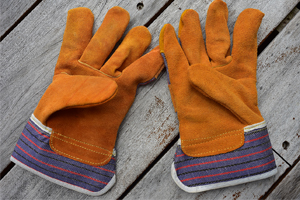- Abrasion: Skin wounds caused by friction or rubbing against a hard surface
- Biological Agents: Viruses and bacteria on surfaces or passed through human contact
- Chemicals: Exposure can cause skin rashes, burns, and other conditions
- Cold: Frostbite is caused by prolonged exposure to cold temperatures
- Electricity: Electric shock can cause burns, electrocution, and even fatalities
- Heat: Burns and blistering from exposure to high temperatures
- Impact: Bumps, bruises, and broken bones can result from sudden contact with solid materials and industrial machinery
- Pinch: Hands and fingers get caught in materials, equipment, or machinery
- Puncture: Sharp objects can piece the skin
- Repetitive Motion: Damage to muscles and nerves caused by repetitive movements and overuse
- Sharp Edges: Painful cuts and lacerations from worksite materials like knives, tools, exposed metal, and glass
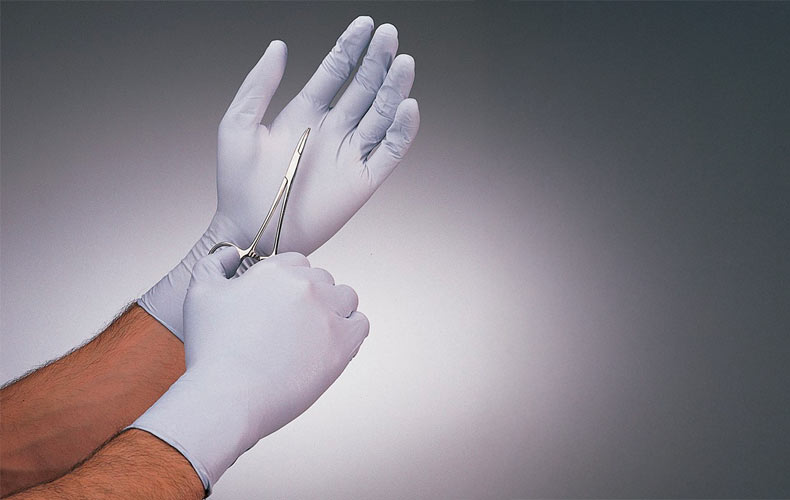
Cleanroom
Specialized hand protection for use in controlled environments where minimizing particulate contamination is crucial
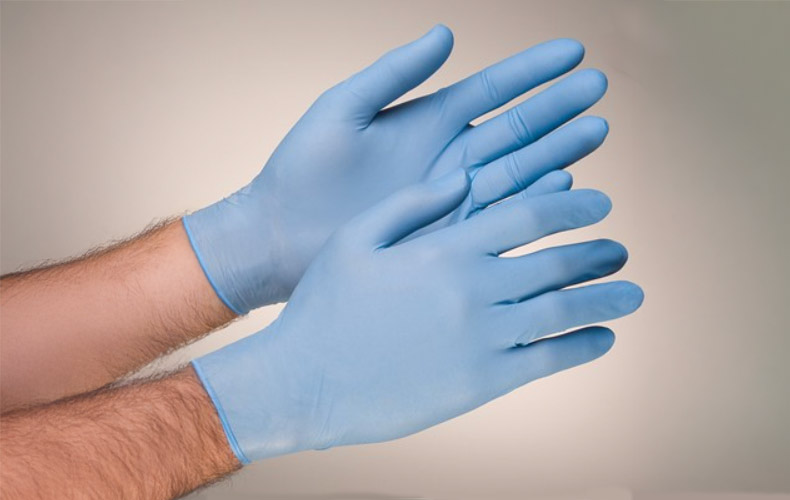
Disposable
Ideal to prevent contamination and hazardous exposure, especially where fingertip sensitivity is required

Inspection
Ensure protection and hygiene to prevent finger oils, marks, or smudges from marring goods and materials

Linesman
Natural rubber gloves specially designed to provide protection for tasks involving electrical voltage
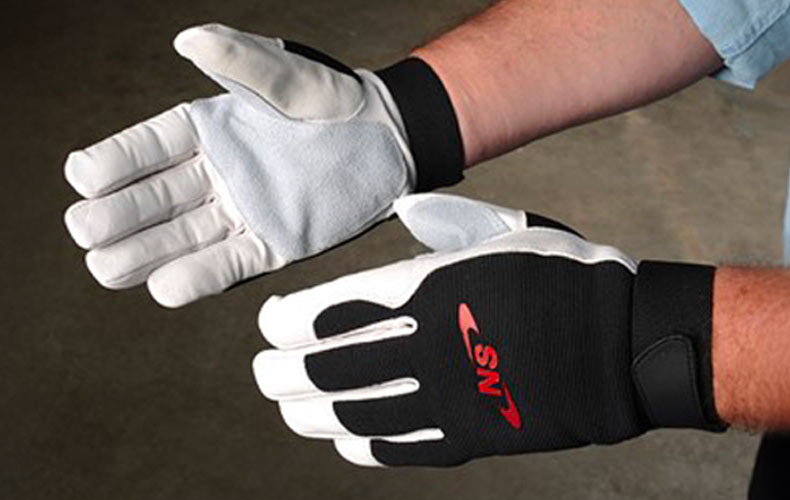
Mechanic's
Often designed with padding, these gloves offer protection against abrasion, bumps, and scrapes

Dotted
Raised dots channel liquids away from the glove's surface to deliver secure handling and great abrasion resistance
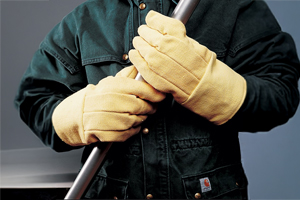
Kevlar
Fully extended and perfectly aligned molecular chains provide a strong barrier against slashes, cuts, heat, and punctures
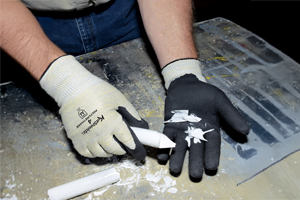
High perfomance polythylene (HPPE)
Incredibly strong material that's made even stronger when combined with steel or glass fibers
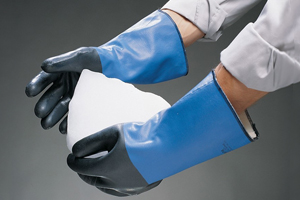
Neoprene
Synthetic material provides strength, durability, and resistance to some chemicals and oils

Vinyl
Synthetic plastic material offers strength, durability, and resistance to moisture and humidity
Glove Features
Cuff Styles

Rolled Cuff
Provides strength in donning and helps prevent tearing
Safety Cuff
Help protect the wrist area and measure 2 1/2" in length
Wrap Cuff
Adjustable cuffs feature hook and loop closures at the wrist for a secure, custom fit
Gauntlet Cuff
Ensure added forearm protection and measure 4.5" or more in length
Knitwrist Cuff
Designed to hold the glove in place and prevent debris from entering at the wrist
Band Top Cuff
Allows wearing of a glove over a shirt cuff for added protection
Pull-On Cuff
Provides easy on and easy off. Usually has an elastic gathering on the top or bottom of the wristThumb Styles

Wing Thumb
Reduce fatigue and stress on seams
Keystone Thumb
Ensure comfort and flexibility while providing added wear resistance
Straight Thumb
A continuous full thumb constructed to provide a tight working grip
Ambidextrous Thumb
Reversible style allows wear on either hand for longer lasting useGlove Linings

Jersey
Soft, interlock knit lining helps keep hands warm in cold environments
Fleece
Adds lightweight warmth and is soft and comfortable against the skin
Foam
Insulates to protect hands in cold temperatures and when handling cold materials
Thermal
Includes acrylic terrycloth, cotton, and Thermonol materials to protect against the cold
Flocked
Cotton fiber applied to the inside of unsupported gloves absorbs perspiration and increases skin comfort
Kevlar
Cut, abrasion, and heat resistant material. Used as a lining in leather and can be coated for a better grip
Knitted
Provides support for dipped gloves. Adds durability and insulation
Wool
Used as a lining to dissipate heat in aluminized and glass cloth gloves and mittsMeasuring for a Proper Fit
With a proper fit, gloves can be easy and comfortable to work with, reduce hand fatigue, and provide the safety your workers need.
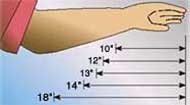
Length
For accurate glove length, measure from the tip of the middle finger to where the cuff edge should be on the wrist or arm, then select the proper cuff and length for your needs.
Size
To measure your hand size, wrap a tape measure around the palm at its widest point. This measurement, in inches, is equivalent to the glove size (i.e., 9" measurement = size 9). Letter sizes to measurements: S (7-8), M (8-9), L (9-10), XL (10-11)More Information
OSHA 29 CFR 1910.132 provides general requirements for personal protective equipment and 29 CFR 1910.138 provides requirements for gloves.
Additional personal protective information is available through OSHA's Safety and Health Topics.
A wide variety of standards applies to gloves. The following are examples of some of the standards, regulations, or information that apply to gloves. Please note that additional standards and regulations could apply and would depend on your specific applications and uses of gloves.
- Voltage insulating and lineman's gloves information ANSI/ASTM D120-09, F696-06, F496-08, F1236-96(2007), Electrical Protective Devices OSHA 29 CFR 1910.137, OSHA eTools for PPE. NFPA 70E also provides standards for electrical safety
- Cut resistant gloves are generally covered under OSHA 29 CFR 1910.138. OSHA also provides an industry eTool for poultry processing and assistance for the meat packing industry.
- USDA accepted materials for glove components allowed for repeated use in a direct food contact zone must comply with the Federal Food, Drug, and Cosmetic Act (FFDCA)
Call our knowledgeable Technical Support Department at 1-800-922-8553 or fill out the form below:


